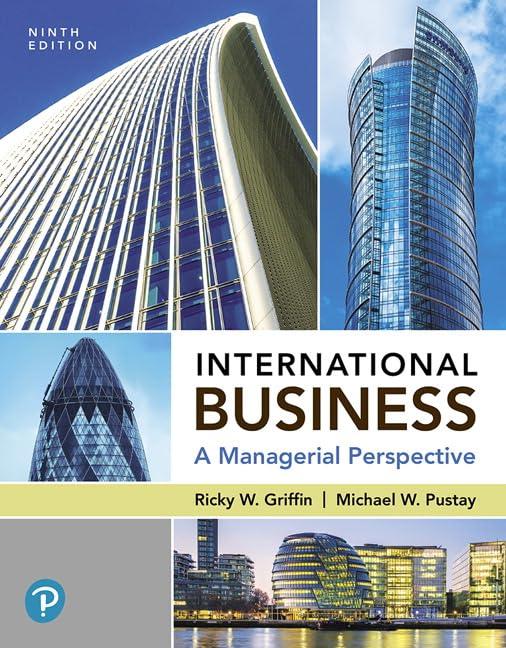Identify the basic control issues at Anglo American. Although some observers might assume that Anglo American PLC
Question:
Identify the basic control issues at Anglo American.
Although some observers might assume that Anglo American PLC is a U.S. company, in reality the company has never been American. Instead, Anglo American is based in the United Kingdom but has substantial operations in other parts of the world, most notably Africa, South America, and Australia. The firm is the world’s fourth-largest diversified mining company. It has annual revenues of more than \($20\) billion, earned \($4\) billion in profit in 2017, and has around 91,000 employees.
The last 10 years have been a period of change for Anglo American. The major upheavals started in 2007 when Cynthia Carroll was appointed as CEO. The Times of London expressed shock at the appointment, referring to mining as “an irredeemably macho industry.” Not only was she not a man, Carroll was neither a mining industry veteran nor British (she’s an American). When her appointment was announced, Anglo’s stock immediately dropped \($0.80\) per share. The dice, observed the Times, were “probably loaded against her from the start,” and to make her job even more difficult, she was soon forced to embark on a \($2-billion\) efficiency program involving several changes guaranteed to rile the old guard of the century-old company. Her whirlwind campaign to cut costs by \($450\) million in the first half of 2009 earned her the nickname “Cyclone Cynthia,” but many analysts and investors were unimpressed by the savings: Because the entire industry was struggling with high costs during the recession, Carroll’s cost-cutting was seen as little more than the logical and obvious strategy to pursue.
Then, in June 2009, the Swiss–British mining company Xstrata proposed a merger with Anglo—a move that would create a \($68\) billion firm to compete with industry giants like BHP Billiton, Vale, and Rio Tinto.
Xstrata said in a statement that it was seeking “a merger of equals that would realize significant value for both companies’ shareholders” and cited “substantial operational synergies” that could amount to savings of \($1\) billion a year in combined costs. From Anglo’s perspective, there were drawbacks to the deal—its portfolio was worth more than Xstrata’s and would be diluted by a merger of the two—but the appeal to Anglo shareholders was clear: Depending on how the new company distributed the cost savings among its investors, Anglo shareholders stood to realize an increase in the market value of their holdings of 26 percent to 37 percent.
Carroll and the Anglo board quickly rejected Xstrata’s offer as “totally unacceptable,” and in August, Carroll presented both Anglo’s mid-year financial results and its argument for remaining independent. Once again, however, the numbers were underwhelming: Because of the global economy, profits were off 69 percent and revenues 38 percent. Anglo investors wanted to know what management was doing to deliver the kind of returns promised by the Xstrata merger, and an analyst at Barclays Capital, Britain’s biggest investment bank, announced that, “in our view, Anglo American has not yet presented a strong argument as to why a merger with Xstrata is not strategically sensible and value-creating for its shareholders.” “Frankly,” replied Carroll, I know what it is that we need to do.... We have a strategy, we have clear goals, we have tremendous assets...in the most attractive commodities in the world. The opportunities are massive.... We’re well aware of what Xstrata does, but I’m very confident of what we can do in the future.
Step by Step Answer:






